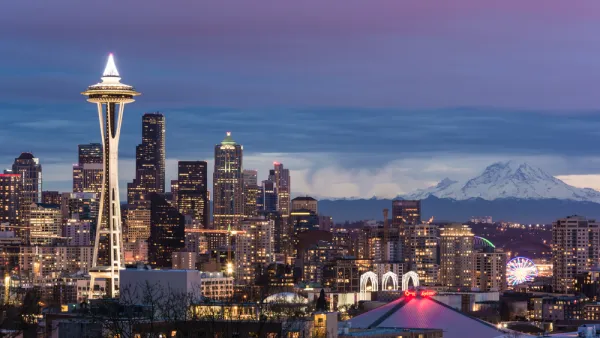In an analysis of newly released census data, Wendell Cox outlines recent population trends in the fastest-growing country in the G-8.
Canada has outpaced the United States in population growth by one-third over the past five years, according to 2011 census results, with much of that growth concentrated in its six metropolitan areas (Toronto, Montréal, Vancouver, Ottawa-Gatineau, Calgary, and Edmonton).
Yet within those regions, which have added nearly 10% to their populations since 2006, urban centers have been overshadowed by their outlying suburbs. In some cases, central municipalities account for only one-fifth of the growth of their metropolitan areas.
The author of the report points to the following explanation from The Gazette:
Most of the people who leave... do so reluctantly. They are often young people with children (or who hope to have children). They enjoy the city's stimulation and its proximity to workplaces, shopping and entertainment. But they leave because there's not enough suitable housing in their price range. The taxes are also high and services spotty. Not the greatest place to raise a family.
According to Cox, these trends mirror broader patterns in American and global population movement, which may have negative implications for advocates of smart growth.
FULL STORY: Special Report: Census 2011: Urban Dispersion in Canada

National Parks Layoffs Will Cause Communities to Lose Billions
Thousands of essential park workers were laid off this week, just before the busy spring break season.

Retro-silient?: America’s First “Eco-burb,” The Woodlands Turns 50
A master-planned community north of Houston offers lessons on green infrastructure and resilient design, but falls short of its founder’s lofty affordability and walkability goals.

Delivering for America Plan Will Downgrade Mail Service in at Least 49.5 Percent of Zip Codes
Republican and Democrat lawmakers criticize the plan for its disproportionate negative impact on rural communities.

Test News Post 1
This is a summary

Test News Headline 46
Test for the image on the front page.

Balancing Bombs and Butterflies: How the National Guard Protects a Rare Species
The National Guard at Fort Indiantown Gap uses GIS technology and land management strategies to balance military training with conservation efforts, ensuring the survival of the rare eastern regal fritillary butterfly.
Urban Design for Planners 1: Software Tools
This six-course series explores essential urban design concepts using open source software and equips planners with the tools they need to participate fully in the urban design process.
Planning for Universal Design
Learn the tools for implementing Universal Design in planning regulations.
EMC Planning Group, Inc.
Planetizen
Planetizen
Mpact (formerly Rail~Volution)
Great Falls Development Authority, Inc.
HUDs Office of Policy Development and Research
NYU Wagner Graduate School of Public Service





























